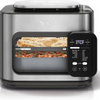RECIPE: Shabu Shabu
cuffs054
16 years ago
My brother loves this. It seems really easy. I'm wondering if you can use shrimp and/or scallops. He says they use different kinds of broth and vary the meats/vegs.
My first attempt at cheese fondue (ya, I'm a little late) was awful. Any ideas?

lindac
cuffs054Original Author
Related Professionals
Edmond Landscape Architects & Landscape Designers · Arnold Landscape Architects & Landscape Designers · Deer Park Landscape Architects & Landscape Designers · Forest Acres Landscape Architects & Landscape Designers · Milwaukee Landscape Architects & Landscape Designers · Wareham Landscape Architects & Landscape Designers · Buford Landscape Contractors · Annandale Landscape Contractors · Ashburn Landscape Contractors · Las Vegas Landscape Contractors · Mason Landscape Contractors · Oklahoma City Landscape Contractors · Waterford Landscape Contractors · Bedford Swimming Pool Builders · Golden Glades Swimming Pool Builderschase_gw
chase_gw
jessyf
jessyf
roselin32
rachelellen